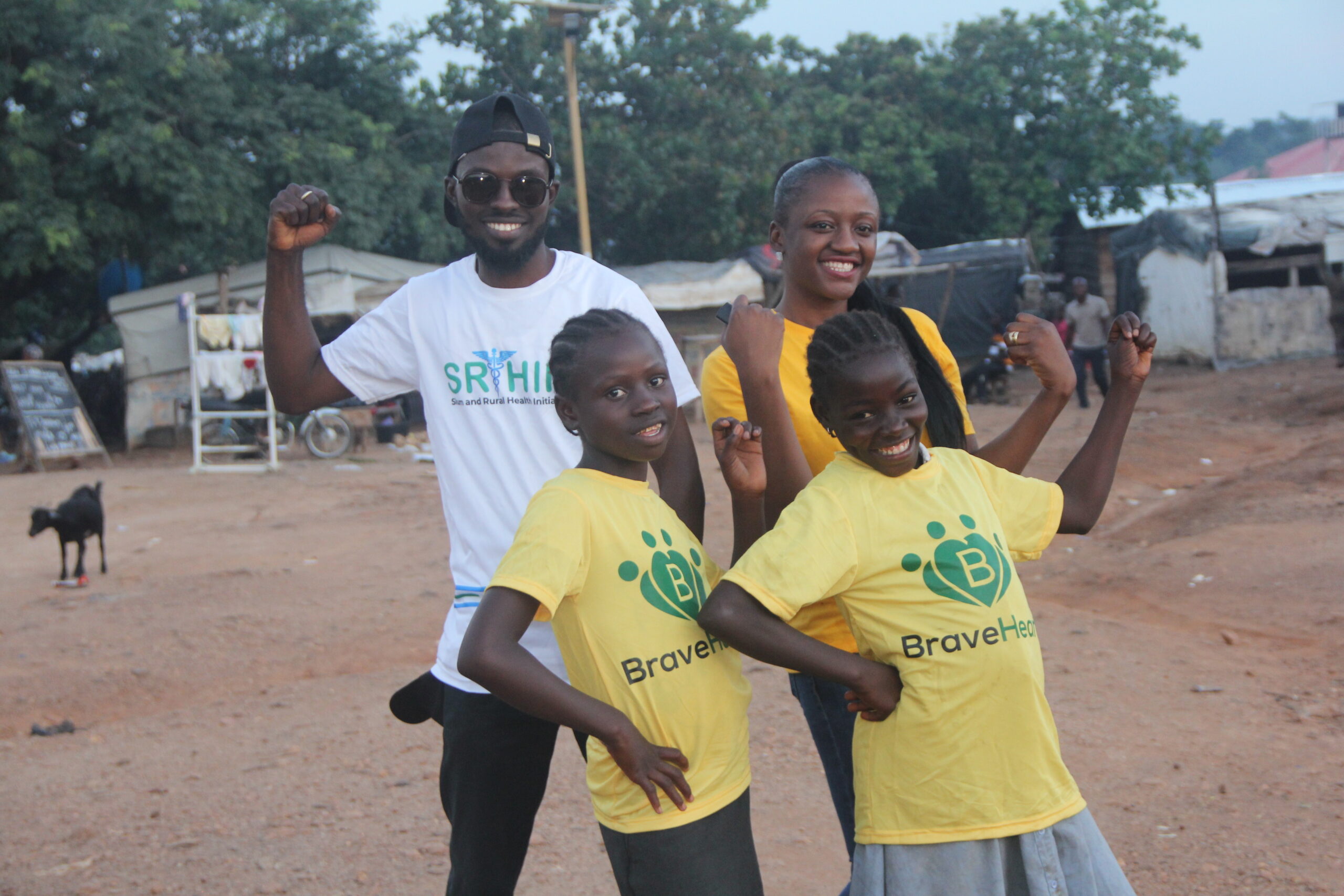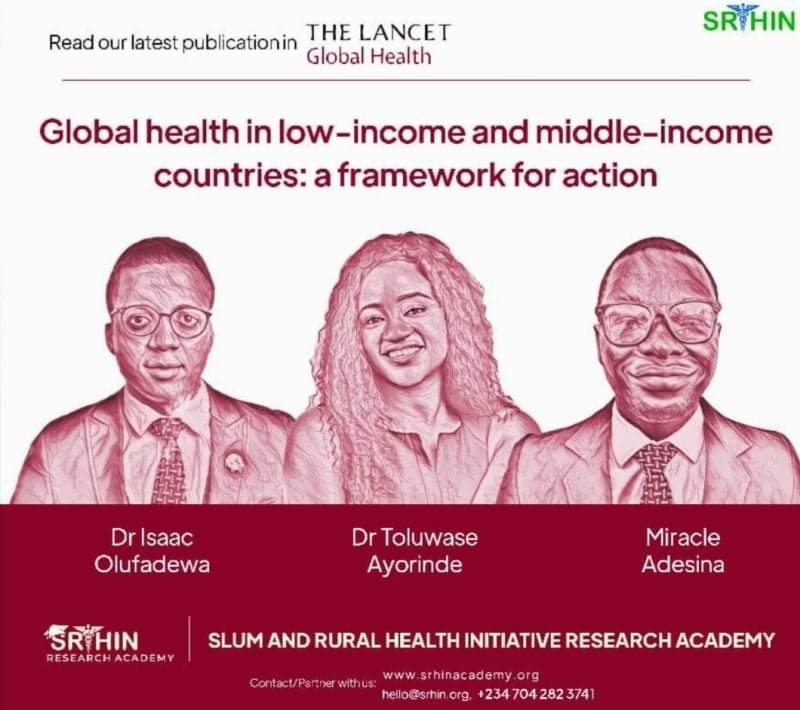For five days now, Mr Adebola, a forty-five-year-old private school teacher has not dared to leave his house in Ajegunle slum of Lagos State except to go to the toilet, his tiny home has no toilet, bathroom or kitchen of its own, his family is low on food, his children although young have been consuming a lot of food since the closure of schools in Nigeria because of the coronavirus disease (COVID-19) pandemic. Mr Adebola is trying to comply with lockdown orders in the state but his situation becomes desperate as he doesn’t get paid if he doesn’t go to work. This drives us to ask ‘is social distancing workable in African slums?’
The United Nations Human Settlements Programme (UNHS) defines a slum as a wide range of low-income settlements and/or poor human living conditions, which include the vast informal settlements that are quickly becoming the most visual expression of urban poverty. This is also the case in cities in Nigeria and many other African countries, where the growth rate of the urban population is faster than economic growth. The rising level of poverty in these countries has made slum living an unavoidable reality for many people living below the poverty line. The World Bank collection of development indicators reported that the percentage of urban population living in Nigerian slums as at 2014 to be 50.2%.
The high population growth rate of Lagos has been largely attributed to rural-urban migration, the increased need for land, housing and shelter by rural migrants has led to the development of slum communities. The urban slum dwellers of Lagos are deprived of essential basic social facilities and face poor living conditions because of population density, overcrowding, unemployment, poverty, lack of drinking water, inadequate liquid and solid waste management, noise pollution, poor health care access and poor housing quality. These conditions make the informal settlements breeding grounds for diseases such as tuberculosis, hepatitis, dengue, pneumonia, malaria, cholera, diarrhoeal diseases and the current coronavirus disease.
From the above example, one could say that Mr Adebola has tried to observe social distancing. In public health and according to the Centers for Disease Control and Prevention (CDC), social distancing also known as physical distancing involves limiting contact with people outside one’s home, it means keeping a safe distance between oneself and other individuals. Coronavirus disease spreads mainly among people are in close contact for a lengthy period. Spread occurs when an infected person coughs, sneezes, or talks, and droplets from their mouth or nose land in the mouths or noses of people close to them. Social distancing when carried out would prevent the spread of contagious diseases as these diseases are widely spread through physical contact.
To contain COVID-19, African countries have joined other countries of the world in imposing restrictions on movement of people and human contact, people have been ordered to stay in their homes, observe social distancing and work from home if possible. However, all over social media platforms we can see how citizens of these countries have been complaining about the disruption in livelihood caused by the restriction. It has forced people who struggle everyday by going out to work and earn a little to take care of themselves and their families to stay in their homes hindering finances and other activities of daily living. Such measure then becomes ineffective as people are more like to disobey the stay-at-home order rather than go hungry.
To better understand the living conditions in slums, it is important to look at the health hazards that slum dwellers face. Life in the slums is far from glamorous as families are cut off from most basic services, this is mostly because unplanned settlements are typically not connected to basic services such as clean water, sanitation and hygiene facilities, the lack of windows and air vents puts residents at great risk of contracting water-borne and respiratory diseases. High population density, lack of proper toilets and proximity of homes allow diseases to spread quickly. This creates an actual risk for sizeable populations who often cannot access adequate health facilities to get treatment in time.
Also, many people have personal circumstances or situations that present challenges with practicing social distancing to prevent the spread of COVID-19. People who live in shared housing, people living with terminal illnesses, people living with disabilities and people experiencing homelessness among others in African countries would find it difficult to practice social distancing. Small scale business owners, daily wage workers, self-employed individuals and family-owned enterprises in Africa are also affected by the restriction. These people who depend on the income from these businesses will undoubtedly violate stay at home orders to prevent hunger and desperation.
Social distancing could probably work in other developed countries of the world but in Africa it is almost impossible as there are many informal settlements and slums where even before the global pandemic lacked the amenities. These places do not have a good healthcare system, no good sanitation or proper waste disposal methods in place, they are overcrowded, toilets and bathrooms are shared by almost all of them, kitchens are also not an exception, there is a communal mode of living, they use the same tap and borehole; they walk an interminable distance before they can get water and access to clean water is very limited. They do not work from home as opposed to their counterparts in urban settlements; they live hand to mouth and do not have high-paying jobs to depend on, most of these people do not even have access to detailed information about the virus, its affects and how to prevent it. To expect people living in these households not to leave their homes, it is not only impractical; it is unrealistic.
In addition, slums have houses that are linked and inhabitants practically live together in a tiny space, lanes that are so narrow that people have to rub shoulders to pass emergency and law enforcement vehicles have difficulty navigating through these unplanned settlements because of tightly woven pathways and few signs, resulting in difficulties monitoring and controlling crime and providing health services. Poor community planning and poor structures create hazards for inhabitants, which are exacerbated in many unplanned settlements by floods, fires and landslides, weak structures are often blown away or destroyed during storms and earthquakes. This kind of living condition and way of life in African slums would not permit any form of social distancing, this would result to an increase in spread of the virus because if one person contracts the virus, because of proximity to others, spread continues.
Members of these communities have important roles to play to prevent the spread of the virus. Lets not forget the important roles our government also has to play in the prevention of COVID-19. They include:
- Distribution of relief packages to the poor and vulnerable communities.
- Enforcement of social distancing restrictions.
- Provision of hand washing materials and other things needed by these communities to prevent the spread of the virus.
- Continuous testing of individuals in vulnerable communities.
- Spreading of facts and detailed information about the virus.
- To achieve social distancing, people living in vulnerable communities should be:
- Educated on the virus, facts and detailed information should be shared through social media, volunteer programs, community outreaches among others.
- Encouraged to stay away from each other, especially those with signs of respiratory disease, if staying at least 6 feet is impossible, they should be encouraged to avoid physical contact like shaking, hugging and touching.
- Encouraged to limit the use of public transportation and staying a safe distance from another passenger.
- Encouraged to educate and prevent their children from playing out to avoid infection.
Other tips include
- Going out only when necessary.
- Covering mouth and nose when around others.
- Avoiding larger crowds or mass gatherings such as in religious activities.
- Work from home if possible.
- Obey orders to prevent the virus from authorities.
- Frequent hand washing.
From the above, the current population growth is outpacing the rate at which cities can respond to the need for housing. This is the very condition under which slums thrive and grow out of control. Families living in slums lack the crucial conditions they need to live a decent life free from diseases such as COVID-19. Social distancing which is a strategy put in place by the government to slow the spread of the virus since it can be transmitted through human contact is physically and economically impossible for African slums. There is only little we can do to ensure this strategy is practiced in African countries and other vulnerable communities in the world. I enjoin the government and citizens of African countries to perform their roles and work hand in hand to ensure they practice social distancing and to prevent further infection and spread of the coronavirus disease.
REFERENCES
• Addisu L. (April, 2020). Africa in focus; social distancing unlikely to hold up in Africa without a safety net for microenterpreneurs. Retrieved from https://www.brookings.edu/blog/africa-in-focus/2020/04/09/social-distancing-unlikely-to-hold-up-in-africa-without-a-safety-net-for-microentrepreneurs/
• Centers for disease control and prevention; coronavirus disease 2019. Retrieved from https://www.cdc.gov/coronavirus/2019-ncov/prevent-getting-sick/social-distancing.htm
• Habitat for Humanity Great Britain: What is a slum. Retrieved from https://www.habitatforhumanity.org.uk/what-we-do/slum-rehabilitation/what-is-a-slum/
• Karsten N (March, 2020). In Africa, social distancing is a privilege few can afford. Retrieved from https://www.aljazeera.com/indepth/opinion/africa-social-distancing-privilege-afford-200318151958670.html
• Olaoluwa P. (October, 2018). Urban slums in Nigeria: Ensuring healthy living conditions. Retrieved from https://www.urbanet.info/nigeria-urban-slums-health/
• Priyali S & Esha M. (March, 2020). Social distancing is a privilege of the middle class. For India’s slum dweller it would be impossible. Retrieved from https://edition.cnn.com/2020/03/30/india/india-coronavirus-social-distancing-intl-hnk/index.html
• Somik L & Sameh W. ( April, 2020). Cities crowding and the coronavirus: Predicting contagion risk hotspots. Retrieved from https://blogs.worldbank.org/sustainablecities/cities-crowding-and-coronavirus-predicting-contagion-risk-hotspots
• Taibat L. (April, 2020). Lagos size and slums will make stopping the spread of COVID-19 a tough task. Retrieved from https://theconversation.com/lagos-size-and-slums-will-make-stopping-the-spread-of-covid-19-a-tough-task-134723
• Trading Economics: Nigeria- population living in slums (% of urban population). Retrieved from https://tradingeconomics.com/nigeria/population-living-in-slums-percent-of-urban-population-wb-data.html
• Victoria M & Aniruddha G. (March, 2020). From Dhaka to Gaza: How do you socially distance in a crowd. Retrieved from https://medicalxpress.com/news/2020-03-dhaka-gaza-socially-distance-crowd.html




Resources such as the one you mentioned here will be extremely helpful to myself! Ill publish a hyperlink to this web page on my personal blog. Im certain my site visitors will discover that very useful.
Is it okay to post some of this on my page if I post a reference to this page?